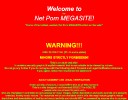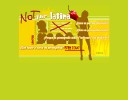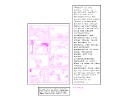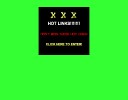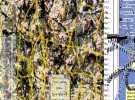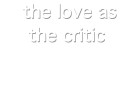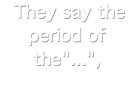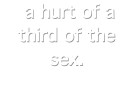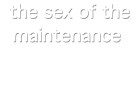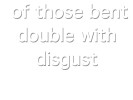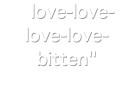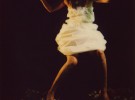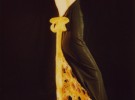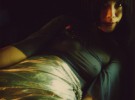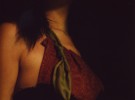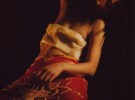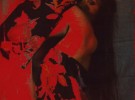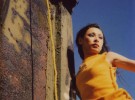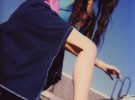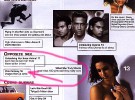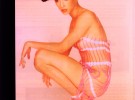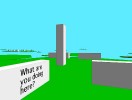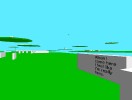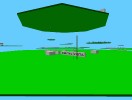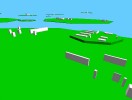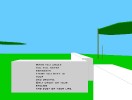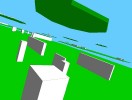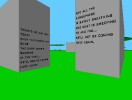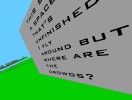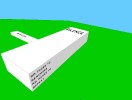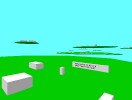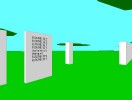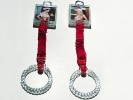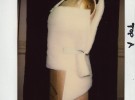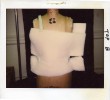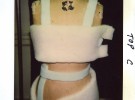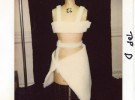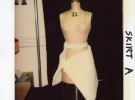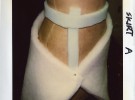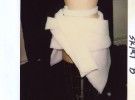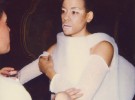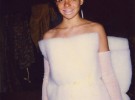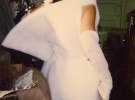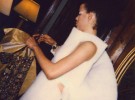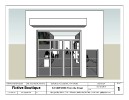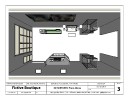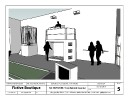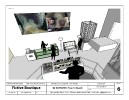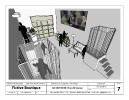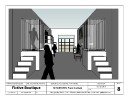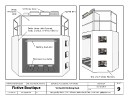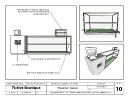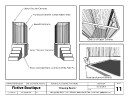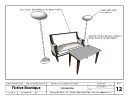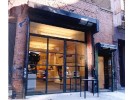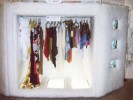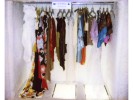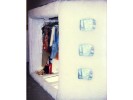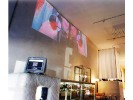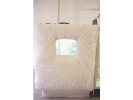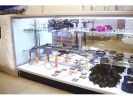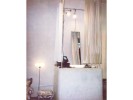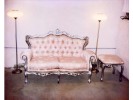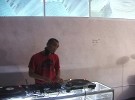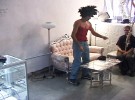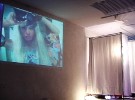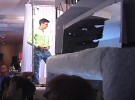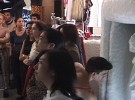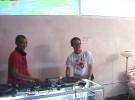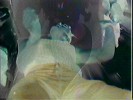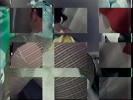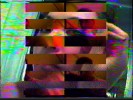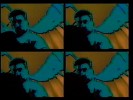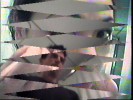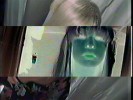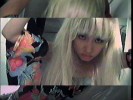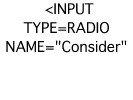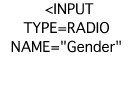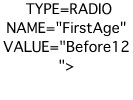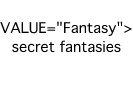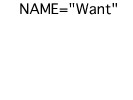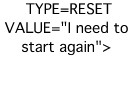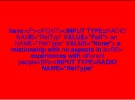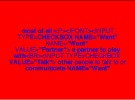Fictive.net in conjunction with The Point art gallery launches Fictive Net Porn, a fictional World Wide porn megasite directory. Fictive Net Porn features the work of over 70 artists, writers, and programmers from around the globe who seek to address the contemporary phenomena of pornography on the internet.
Â
Screen Captures from the site:
Project Description:
There are a million different responses to Porn. Everyone has a unique relation to it. Whether they use it, try to avoid it, fight against it, or make their own. There is more porn and more access to porn than ever before in the history of contemporary society. Yet despite its ubiquity it is rarely discussed.
Some people feel that porn is an exploitation of woman as serious and severe a crime as rape and must be stopped at all costs. For others it is a scourge which we must accept, the price paid for protecting our freedom of speech. Still others see attacks on porn as negative, an attempt by conservative hetrosexist patriarchal society to repress the power of sex and fecundity inherent in women, or the fundamental right of gays, lesbians, hetros, and a myriad of other genders to make their own choices in terms of sex, gender, and desire. They see exploitation and negative stereotypes in porn as a problem inherent in all aspects of contemporary society and something to be battled on all fronts, but not a reason to stop erotic expression. For some the biggest problem with porn is there is not enough GOOD pornography. There is a women run sex toy shop in New York addressing the issue by producing their own videos, showing women of color having sex in positive ways.
The development of videotape and the internet have had a huge impact on access to porn. People used to have to travel to some seedy part of town and risk being recognized if they wished to purchase it. With the advent, first of porn videos, and later of net porn, there was a sudden explosive rise in the number of people viewing porn, and the amount of pornography being produced.
Porn is now big business. – In January 2000, 17.5 million people (in the USA alone) visited porn sites from their homes, according to the U.S. Nielsen ratings. Data research firm Datamonitor predicts spending on access to adult sites to reach $3 billion a year, by 2003. According to the New York Times, “The General Motors Corporation, the world’s largest company, now sells more graphic sex films every year than does Larry Flynt, owner of the Hustler empire.”
As a result of the internet, porn is also now a World Wide phenomena. People from every culture around the globe are viewing porn. Not only are main stream Western cultural depictions diffusing into the rest of the World, but also practices or interests particular to each Nation or cultural group are starting to leap borders.
Subcultures of interest are also coming together in a way that has never been possible. People who a generation earlier might have lived out their entire lives believing that no one else could possibly share their particular sexual interest or proclivity are discovering that, in fact, there are thousands of like minded people.
The mass viewing of porn is an unprecedented cultural event in history, yet there is surprisingly little discussion about it. What does all this virtual fantasy do to us and for us? With the number of adult oriented sites on the net at 40,000 and growing everyday it seems like high time to tackle the question. Working with a host of collaborators including visual artists, graphic designers, writers, architects, anthropologists, and programmers, across continents, genders, and ethnic backgrounds, FICTIVE launches Fictive Net Porn – a giant fictional porn megasite directory. Fictive Net Porn – a comprehensive smorgasbord of art/porn porn/art sites sure to get you hot, or at least hot under the collar. Fictive Net Porn – bringing the issue of pornography right to your lap, (or laptop.)
Fictive net porn – its not porn, its art about porn.
Special thanks:
the point
Formavision
Geronimo Creative Workshop
Mixed Mess@ge
AfterPlanet,
Zengo Productions
Penthouse.com
Sowear
Chris Jordan
Klimate
Toys in Babeland
Soomska Vodka
http://www.fictive.net/porn/
The Cathedral and the Bizarre
A digital artwork which is part of the website acidlife’s project “Deface!”, displayed at the url http://www.acidlife.com/deface/pollock01.html
Â
Project Description:
The website acidlife has a participatory project called “Deface!”, dedicated to Piero Cannata, which according to the site explores the new interaction possible with digital media. Though the description reads a bit like the Futurist Manifesto, it none the less brings up some interesting issues.
Cannata could be seen as, at best, a poor choice to contribute to ideas about art, being one of Italy’s most infamous art vandals. In 1991 he broke a toe off of Michelangelo’s famed statue of David, claiming that “spirits” had told him to do it. Cannata was arrested and later transfered to a mental hospital. Released in 2002, he now serves as a museum guide, providing tours of Tuscany’s artistic masterpieces – including David.
He also attacked Jackson Pollock’s 1947 “Watery Paths” at Rome’s National Gallery of Modern Art. A similar work by Pollock named “No. 5, 1948” was reportedly sold in 2003 for $140 million, but Connata did not attack “Watery Paths” because of its economic value. He planned to vandalize a painting by the Italian abstract artist Piero Manzoni, and in his own words “I didn’t find one of his, but I found an equally ugly one and damaged it instead.”
In all fairness, Cannata’s attack against the statue of David is matched in its destructiveness by the work of the art restorer Aristodemo Costoli who in 1843 bathed the statue in hydrochloric acid.
Though Cannata’s defacements are churlish actions which sadly align with the growing problem of the far right wing’s attacks on culture, the acidlife project none the less brings up some interesting problems about digital media, reproduction, and derivative works. The Cathedral and the Bizarre makes direct references to these issues.
In 2001, I was having an unusual computer problem where the screen would not redraw correctly and objects moved by the mouse would smear across the screen defacing the image. It was during this problem that I ran across the acidlife project.
Intrigued, I decided to use the provided jpeg of Jackson Pollock’s “Cathedral”, (1947, Enamel and aluminum paint on canvas, 72″ x 35″) to make a reference to Eric S. Raymond’s seminal paper “Cathedral and the Bazaar” which analyzed why open source computer programing works so well, and which provided the final push for Netscape Communications Corporation to release the source code for Netscape Communicator and start the Mozilla project.
The essay is about finding bugs, and I am using a computer with a bug as a form of new media. The Pollock work is about the medium of paint and the process of leaving trails. This was the same effect as I was experiencing in the digital environment with pixels, so there was a nice conceptual confluence.
Raymond’s work, when published by O’Reilly Media in 1999, was the first complete and commercially distributed book published under the Open Publication License. These new types of licenses similar to the later Creative Commons licenses often allow free use for noncommercial purposes, and may even allow production of derivative works.
In an earlier time folk songs were an art form which involved making artworks from combinations and variants of earlier works with no financial remuneration to earlier artists and no restrictions on use of content. This structure proved extremely fruitful in producing cultural value for society as a whole. Yet this system works contrary to the current cultural structures we are used to working under.
Further, when artists made paintings in the past the cost and quality of materials and the unique nature of each work provided an effective exclusivity that people who appreciated the work were willing to reward financially. In new media on the other hand, there is zero cost of distribution so there can be endless copies, and when digital production is combined with open networked distribution, it is very easy for anyone to have an original copy of a new digital masterwork, or to alter it.
Large corporations controlling intellectual content have tried to put a stranglehold on this process to protect their profits, but many valuable cultural endeavors, including the revolutionary Netscape have been buried in the process.
The growing success of the open source movement makes clear there are many possible cultural structures for production and dissemination for software, and as the digital age continues, we may see as yet unimagined structures for art as well. The new systems may at first seem to many bizarre, but so in 1947 did the revolutionary work of a thirty something artist, exploring gravity, balletic movement, and the medium of paint.
Translating Angel, Engine of Desire. Erotic Love Poems of the Translating Angel.
A set of digital poems first presented as part of rhizome.org’s Open Mouse series, New York City, involving text sources from Andrea Dworkin’s definition of pornography, and from medical abstracts about sexual dysfunction, run repeatedly through translation engines till they break down into poems.
View video stills:
Â
Video Samples:
Note: The following are three poems from a larger collection. This work is video only, (there is no audio.)
[tubepress mode=’playlist’, playlistValue=’ED81ED45195EA5DF’]
Project Description:
Digital poetry as a form of literature is pursued through a wide variety of approaches, including in this instance, the use of machine translation to assist in the generation of work.
The translation process may be stated as follows: one, decoding the meaning of the source text, and two, re-encoding this meaning in the target language. Since the 1950’s and even before, people have been searching for a solution that allows machines, in this case computers, to do the job of translation effectively. None the less, problems with living languages such as inherent structural ambiguity, bilingual structural differences, and word-sense disambiguation when a word can have more than one meaning, have remained significant stumbling blocks in the way of this goal.
Today rough machine translation is available to everyone on the web, but it is still only moderately effective. Errors are compounded if the text is run through the translator back and forth repeatedly, and especially if it is translated across a host of languages. This “round-trip translation” method has been used by a number of people for the sake of humor. Most of this work focuses on the preposterous errors that arise and lack of usability, or loss of meaning in the origin texts.
My interest, on the other hand, is in the way meaning continues to cling to words even as text is radically altered through machine transcription. By taking preliminary sources that are dry descriptions of sexual dysfunction or list definitions of what constitutes pornography and running them though this generative process, the academic structure and catalogue nature of the text breaks down. Simultaneously, that which the words refer to opens up, suggesting stories of individuals with questionable secrets struggling with the momentous life issues associated with sex.
Much beauty in poetry derives from the very linguistic anomalies that confound machines in translation, and use of computing to either create poetry all on its own, or to serve as a tool to generate forms for alteration or inspiration, is a growing activity.
The poems in the Translating Angel have been run through a translator many times with experimentation in terms of languages used, order of cycles and number of iterations. This process produced a large series of works from which a small set were chosen. These were then lightly edited, mostly to remove odd characters and certain non English or gibberish words.
The title of the work is a reference to Charles Babbage’s precursor to the computer, the difference engine, and to the classical notion of poetry taking flight.
Fake Fashion Photos from Fictive Boutique
Â
Project Description:
This came out of some of the work done for the Fictive Boutique project. At the time that exhibit was mounted we had contemplated doing some fake fashion photography to accompany it. In the end we decide to wait on that part of the idea, and came back to it later.
Here a series of pieces of clothing which were part of the installation on Elizabeth Street are used to create a set of seeming fashion photos.
Credits:
Photography – Paul Clay
Clothing Design – Yukiko Takagi
Models – Mayumi and Miho
Actual fashion shoot for the first issue of a new L.A. based Latin men’s magazine, incorporating fictional clothing.
Images of the magazine pages:
Fictive Tear Sheet-Project Description
The term “tear sheet” refers to a picture of a fashion designers work which appears in a magazine, and can then be torn out and displayed to show the designer is being successful.
This particular project happened quite serendipitously. The photographer Jo Lance stopped by the Fictive Studio in a quest for clothing to shoot for an upcoming fashion spread for a possible new magazine. Some of the Fictive fashion art caught his eye and after short initial hesitation we suddenly realized it was a fantastic opportunity to create a new work. Some items were manufactured expressly for Fictive Tear Sheet. Jo incorporated the Fictive pieces seamlessly into the shoot along with actual clothing from various other designers.
Little separates Fictive’s fashion art from regular clothing. It is usually an element of a larger artwork which is conceived as a whole. It often involves a performative aspect, and always has some conceptual element involved. One of the very few ways it differs is that it is not for sale as clothing. This is one of the only ways to keep it from spilling over the edge from conceptual into actual fashion.
A disclaimer is in order here. Unlike other recent Fictive work we didn’t first conceive the project and then find creative people to collaborate on it. This work is very ephemeral and after-the-fact. Most of the people involved were simply doing their regular jobs and had no idea we imagined ourselves to be creating an artwork. We never met the editors of the magazine. Jo was simply doing his normal work.
I think this relates in a variety of interesting ways to contemporary fashion. Half the time clothing chosen for a fashion shoot doesn’t even fit the model being used. Clips, clothes pins and other methods are employed to make the clothing look the right way. Photographers frame only elements they like. Stylists grab odd bits of stuff from home, off-the-shelves, or even find something lying around in an abandoned lot near the photo shoot (no lie). These elements are incorporated into the visual look without anyone ever mentioning that they are not for sale and in many cases not even pieces of clothing.
Runway shows are notorious for showing items that would never be ordered by buyers for later sale to the public. These articles function as centerpieces, giving a marketing impression, mood, or sense of how the more normal clothing should be perceived.
There is also a huge focus on the show itself, and designers often see their work entirely wihin this structure. The number of groups and the order of the clothing items down the runway is often being determined before the garments are even designed. One is not creating a variety of clothing items for people to wear so much as one is sculpting a strong show.
The special runway items, (often dear to the designers and essentially, artworks) will be available in the showroom along with all the other items after the runway event, and stylists can and do borrow them for photo shoots. Often they are sought out as the best pieces even if they will never see production.
Thus, between the stylists, photographers and the designers a lot of what one sees in magazines is actually fictional fashion art to begin with.
As you search the periodical literature for what’s hot, what’s now, who you should be, and what you could buy next, we hope you’ll look for a copy of H6K. Whether this new magazine ever actually sees the light of day, It’s an excellent resource for today’s Latin man, and a nice little piece of accidental contemporary art. – Paul Clay
Installation involving a 3D Computer model consisting of a navigable mile-wide virtual cube of visual and textual information.
In the group exhibit BAD SCIENCE, INTERACTIVE INSTALLATIONS AND FABRICATED DIALOGS, presented by mixed mess@ge, in association with The DTW Gallery, New York City
View screen captures:
Project Description:
The title refers both to the look of digitally produced landscape, but also to what’s on the horizon if present trends in our cultural perception of space continue. The work can played with like a big video game you fly around in and explore, but my hope is that for some it may be viewed as a sort of critique of western visualization. It is about the Western historical perception of landscape in the most basic sense.
Â
Digital Vista
Review by Chris Jordan
[abstract]
Digital navigable environment projected on surface of metal tube cube approximately 8′ x 8′ x 8′; two facing surfaces covered and used as digital projection space; pillows, carpet, keyboard and trackball.
[details]
Digital Vista is a multifaceted artwork that questions the massive societal movement towards all things virtual. It blurs the boundary between digital and tangible through viewer interaction, both physical and mental. The traditional role of artist-audience is torn down through the collaborative and interactive nature of the installation.
This is a participatory artwork, utilizing the calm stillness of Zen to create a gateway into the virtual experience. The real life space, contained within the square mesh, welcomes you as well as supports you through the virtual experience. Once you are seated and Paul has coached you, like the Zen master, on the controls, you begin the exploration. The first thing you see are three dimensional green lillypad-like extrusions floating on a cyan background. Zooming into these stark structures, you notice gray tombstone-like obelisks on them. Further navigation towards these obelisks reveals simple words and phrases on their surfaces. As you stop and look around these spaces, you begin to notice words combining into more complex thoughts as different obelisks line up in 3 dimensional space. While shifting around these cubes, the combinations change; some disappear, some emerge, positions are altered, and you begin to realize the delightful complexity of this experience.
Your mind soars, dreamlike, while your body rests comfortably within the peacefulness of the cushioned cube. For me it felt like an out of body experience. I zoomed from lillypad to lillypad, creating different motions, rhythms, and phrases out of the objects. It was exciting, thinking of Burrough’s work with audio cutups in the 50’s, conjuring 3D meaning out of the recombination of words. The smooth response of the system allows you to hunker down in a cluster of cubes, and spin around, the words and shapes combining in a blur of meaning, form and phrase fusing into one.
As I became more immersed, the starkness of the environment created a feeling of walking through a graveyard. I then interpreted these tombstones as a memorial to the actual words written on them. Initially the flash and discov- ery of this virtual space gave the Digital Vista meaning, showing humanities moth-like draw to all things bright and shiny. But paradoxically it is a statement on how that flash is eroding society’s connection to not just literature, but the use of words. We see this every day, as more and more people turn on, and tune out. People have been reading less and less, opting instead for the somnambulism of television, and the bang of video games. Digital Vista not only questions that shift in society, but creates a memorial to the casualties in this future atmosphere.
The Dadaist notion of the “Exquisite Cadaver” opened the 20th century with word play exploration as an art form. Now at the close of the century, Paul Clay’s Digital Vista is appropriately representing the use of language or words as the modern Cadaver.
Project Credits:
Digital Vista by Paul Clay
Text: Karen Williams with additional text by Paul Clay and Ed Pastorini.
Early versions of the presentation included contributions by Yuki Takagi, Willyum Delirious, and Jamie Leo.
A pair of objects made at invitation, to be auctioned as part of a benefit for Harvey Lichtenstein in celebration of his retirement from the Brooklyn Academy of Music (BAM) after his 32-year reign as the institution’s executive director. In 1999 President Clinton awarded Mr. Lichtenstein the National Medal of Arts.
Made from old fashioned silicone furniture sliders, lingerie garters, shower curtain hooks, 50’s era holiday fetish images via internet download, picture hanger hardware.
Project Description:
Mr. Lichtenstein is famed for his consistent presentation of cutting edge work exploring difficult issues, including power, sex, and gender. His first season at BAM (1968-1969) included Alban Berg’s sensational and Lurid opera “Lulu,” in which the main character actively prostitutes herself and also included The Living Theater’s “Paradise Now,” involving audience participation, and a notorious scene in which actors recite a list of social taboos that include nudity, while themselves disrobing; which led to multiple arrests for indecent exposure, during the life of the work.
The pair of objects is designed to resemble earrings or Christmas ornaments and references fashion and costume fetishization, while at the same time evoking a sense of “wholesome” 1950s era nostalgia.
The work partly explores what it means for a powerful male from this era to retire. The figures suggest theater starlets, a tawdry version of the Radio City Rockettes Christmas show, and notions of the “casting couch”. In one reading, we see the oppressed woman presented in the attitude of trophy gift and rightfully deserved object for the male who has achieved a heightened social status, and who will now, in retirement, reap the rewards of a lifetime of oppressive power accrual. Though gendered, they also stand in for all people who must labor and “put out” for the powerful in order to survive.
At the same time a heightened sense of the humorous absurdity in codified gender and power roles, (the awareness of which might more typically be found within gay and transgender communities,) could read these as idillic souvenirs of a bygone era. A kind of tribute to an imaginary past where sex is idealized and the fictional roles of “Boy” or “Girl”, Â “Dominant” or “Submissive”, “Object” or “Objectifier” can temporarily be inhabited and reveled in by anyone, no mater what their gender or orientation. A kind of bacchanalian celebration of richly deserved reward.
They are intended to suggest decoration and celebration, provocation and transgression, costume and theatrical spectacle, all in honor of the man who founded the Next Wave Festival, and showed us things that others were afraid to reveal.
An art runway show featuring a series of artist/designers which included dacron, string and foam outfits designed by Paul Clay, with agency models. Part of the event Culture Jam, Night Owls, New York City.
Â
Project Description
While working a freelance day job for a professional drapery and rigging company, I ran across a material called Bonded Dacron made from polyethylene terephthalate, a thermoplastic polymer resin of the polyester family used in synthetic fibers.
Dacron is used in upholstery, and looks a little like the fake cotton ball snow used in miniature scenes at Christmas time, but has high tensile strength and resistance to stretching. It is very light weight, can be purchased in bulk in 30″ or greater width rolls, and is approximately one inch thick.
When I was invited to participate in this group exhibit/runway show, I thought Dacron and foam rubber might be interesting sculptural materials to work with. The bulky physical form was a good challenge when trying to create something that could be worn as fashion.
Credits for Fictive’s contribution:
Paul Clay (Designer)
Tsukuru Asada (Photographer)
Models:
Christie Dinham (New York Model Management)
Rodger Gary (New York Model Management)
Munyana ( Model)
Tiffany ( Model)
Ebon (Model)
An illusory retail space and lounge environment…experience the joys of actual shopping -Â without the hassle of having to take it all home.
An art installation and set of performances at the temporary site EXPO | SURE, 242 Elizabeth Street, New York City, presented through the Downtown Arts Festival, in space created by Pompei AD for Levi’s® Vintage Clothing, festival sponsor.
Â
Design Images:
 Â
Photo Documentation of Installation:
Video Documentation Stills of Performance:
Fictive Boutique Video Stills:
Fictive Boutique Video Excerpt:
[tubepress mode=’playlist’, playlistValue=’0A1237D6EA525A5D’]
Project Description:
The idea behind Fictive Boutique was to create a fake clothing store where people could “shop” but where nothing was actually for sale – a way of provoking thought about boutique culture and the nature of shopping.
Fictive Boutique occupied the front third of a former retail space in Nolita, procured by the design firm Pompei AD, as a “Pop Up” display space showcasing New York artists. Three projects were chosen with curatorial input from the Downtown Arts festival. The DAF for 1999, and the entire Expo Sure event was sponsored by Levi’s®. The project Fictive Boutique was one of three projects chosen for the exhibit.
In addition to the fake clothing store installation, Fictive Boutique also included a series of live performances in which dancers performed a set of choreographed actions in the “dressing rooms” of the boutique and were captured by multiple video cameras. These video feeds were further manipulated by two VJs, live, in time to music from a dj, and were combined with text about the nature of shopping. A live audience watched the spectacle as it was projected onto the walls of the space.Â
A few random thoughts: As shopping has become the main form of activity in public space, boutiques in Nolita and the surrounding Downtown area have become a breeding ground for emerging culture. They have begun crossing traditional boundaries of what a store is supposed to do and be, and are creating spaces where creative people come to hang out and exchange the kind of day to day information that, through the process of accretion, actually creates positive growth and change.Â
Young designer/artists are making small numbers of items, or even one-offs, not solely as a means to generate samples, but as the actual mode of production. This low volume means low profit, especially if the clothing is priced so that like minded individuals can afford it, but the process of making what they love and controlling the content of what is produced outweighs, for them, the drive to purely do business. The argument goes “ignore everything you’re supposed to worry about and make the things you yourself want to see in the world. Opportunities will follow, allowing you to continue.â€
Along with this is a radical shift from emphasis on design to emphasis on styling. In  Tokyo a great number of contemporary street fashion mags have sprung up because kids are combining elements of clothing from so many different cultural esthetics into a single ensemble, that the process of simply reporting on new designers doesn’t reveal any of this whole alternative cultural aesthetic.
In Italy a new class of design professional- a cross between fashion researcher/color predictor and actual designer is occurring as professionals buy vintage, style it, cut, paste and modify, assign alternate colors through swatching, and then advise clothing companies all the way through the production process. They don’t do fashion sketches, and don’t have final say, yet they are essentially the original authors of the clothing’s aesthetic.
Along with this also goes a general shift from things mass produced back to an appreciation of hand crafted work. As styling begins to have similar weight to design, there is now a new process of using historically iconic, mass produced items, in association with radical craft pieces and young designer’s one-offs to create a look and make cultural statements through clothing. In the current fashion era, people aren’t so ready to let others control what there is to wear. Each individual becomes, in a way, his or her own designer.
Credits:
Conceived and Produced by: Paul Clay
Choreography: David Neumann
VJs: Paul Clay and Willyum Delirious
DJ: Hiro
Live Performance: Miho Nikaido, Terry Bartlett,
David Neumann, and Yukiko Takagi
Clothing Design: Yukiko Takagi
Interior Design: Paul Clay
Presented by:
The Downtown Arts FestivalÂ
Expo | SureÂ
Levi’S® Vintage Clothing
A Project of Fictive.Â
Construction:
Mark Power, Torsten Schneider, Toshimi , ArronÂ
Cantor, Joe Foley, Shelly McGuinness, Clement Remy, Noriko.Â
Patterns Advisor: Lise Kovar
Special Thanks:Â
Levi’s ® Vintage ClothingÂ
Ron, Alison , Michael , Lynn, Laura ,Zoe, Jonathan, Vajra, Henry,Â
Shannon, and everyone at Pompei AD.Â
Simon, Craig, and Downtown Arts ProjectsÂ
Lipe, and everyone at LANGUAGEÂ
Joe Plotkin, and Broadway.netÂ
Peter Scharff and Scharff WeisbergÂ
CovadÂ
Apple Computer
Shoes for the performance generously donated by:Â
Norman Smitherman through Suzi Funahara and Antenna 88.Â
(For more info, Contact # 212.645.0700)
Radio Name, a Kind of Loss or Heartache
An HTML text poem as digital projection, first presented as part of Digital Lion, an evening of computer art at Baktun, New York City.
Â
View low resolution images of the slides (black and white version):
Â
View low resolution images of the slides (color version):
Â
Video Sample:
Note: This work is video only, (there is no audio.)
[tubepress mode=’playlist’, playlistValue=’4914B4A0D788756E’]
Project Description:
On the internet there is a bit of text code named for the physical buttons used on older car radios to select preset stations – when one of the buttons was pressed, other buttons would pop out, leaving the pressed button the only button in the “pushed in” or chosen position.
Sometimes when you are filling out an on-line form you are asked to click on little buttons to indicate a choice between one of several possibilities. These elements within HTML web forms are called Radio Buttons, and if you look at the source code each one is actually only a piece of text and will have a “name” and a “value” ascribed to it.
As I was teaching myself HTML for the first time, and looking for examples of forms to better understand them, I ran across the code for a form which was a long on-line survey for some company that sold vibrators and sex toys. They wanted to understand their customers in order to serve them better.
As I looked at the source code, I was struck by the word “value” which is part of programming language but can relate to money and commerce, can also be used to indicate that which we as human beings care most deeply about, on a fundamental level.
Reading further through the code I felt a sudden overwhelming sense of sadness at the human condition. Not a disgust for the subject of the survey but rather a heightened awareness of the isolation people can suffer from and the genuine emotional needs that bring people together.Â
Many elements of the code seemed to be speaking with multiple meanings. Even practical and mundane elements of the survey such as a button at the end for anyone who had accidently made errors, which was labeled “I need to start again” seemed also to reference a lonely soul.
Radio Name, A kind of loss or Heartache is a revealing or a making visible of the original hidden text of the HTML source code for that sex survey, with edits and alterations which both break the code and add to its poetic meaning.
It is presented as a series of slides in either 800×600 pixel resolution on a computer monitor or alternately on a DVD as 640×480 pixel SD video resolution output. It has also been presented in two different iterations, one in color and the other in black text on a white background. In the color version the blue of the text refers to color coding in HTML text editors and the red of the background alludes to the lurid quality of the original survey.
